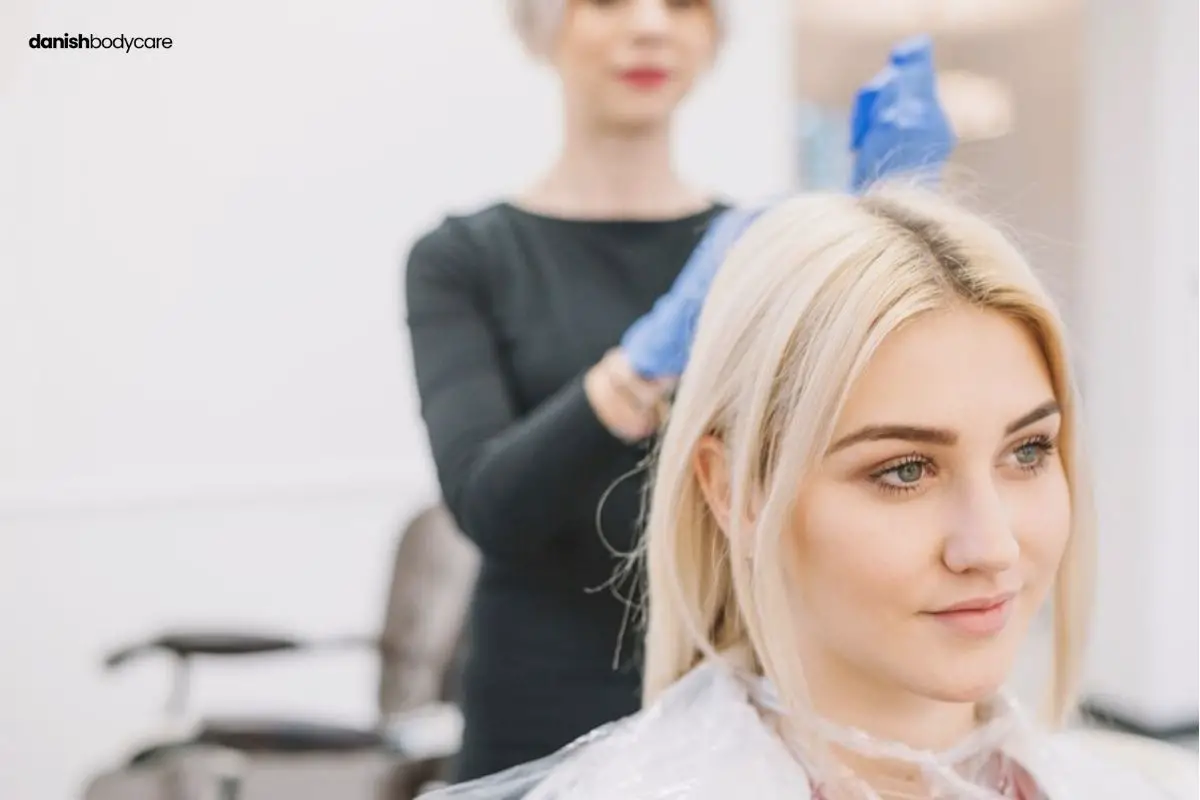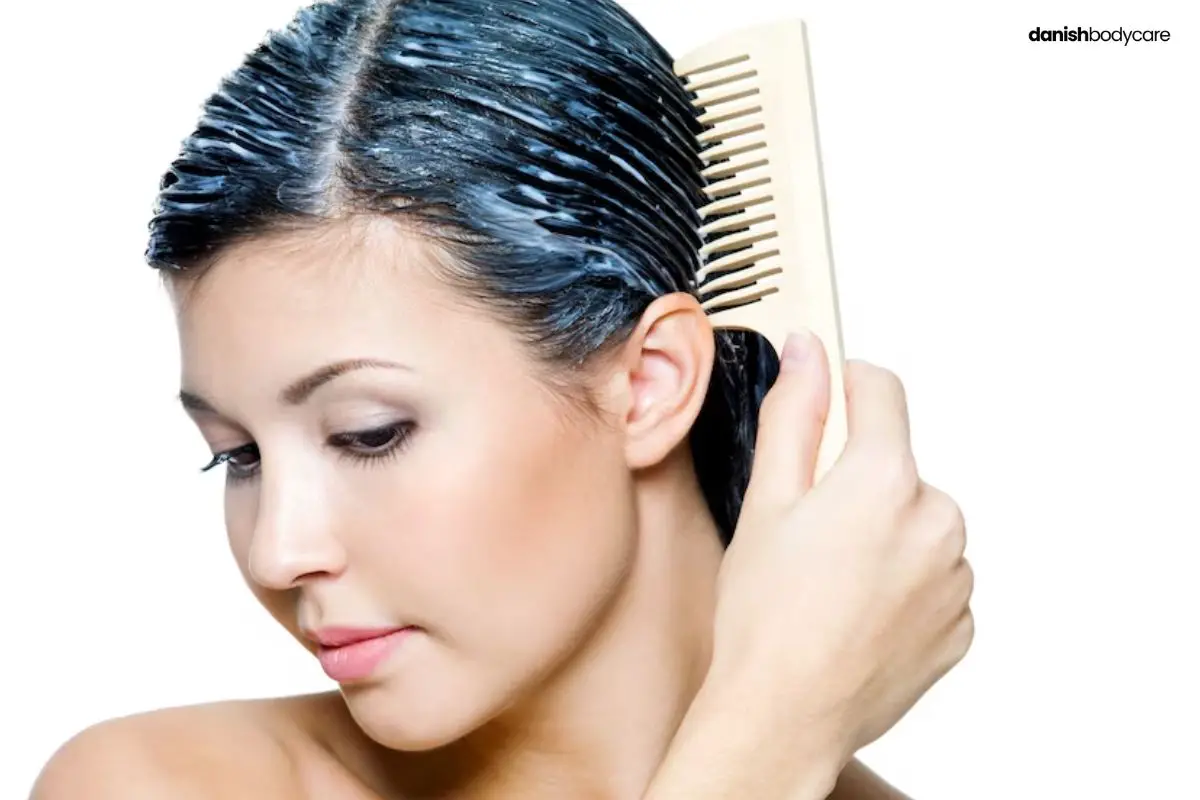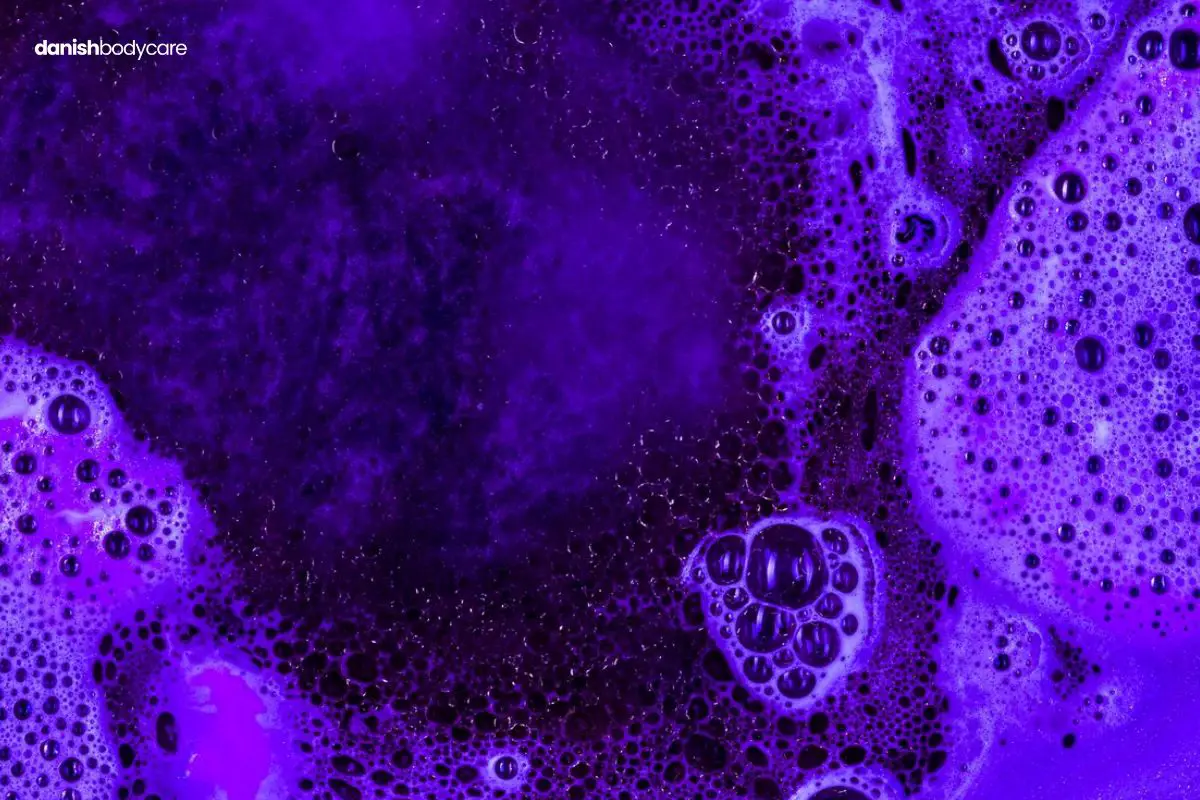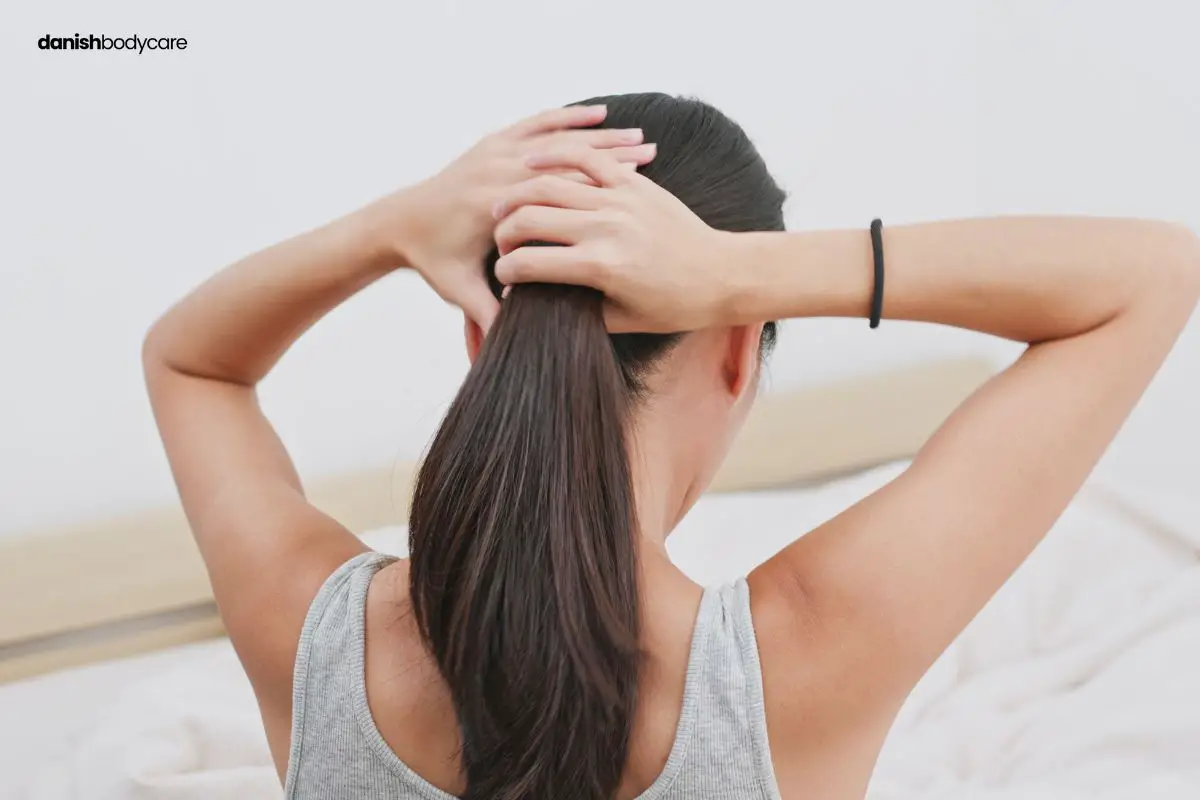Are you curious about how often you can bleach your hair?
It may surprise you to know that 70% of people face hair damage from excessive bleaching.
But don’t worry, we’re here to guide you through the entire process.
Our article unveils 5 expert tips for safe hair treatments. Learn the importance of balance between hair color goals and hair health.
Let’s explore the facts and find the right approach for your hair!
What is Hair Bleach?
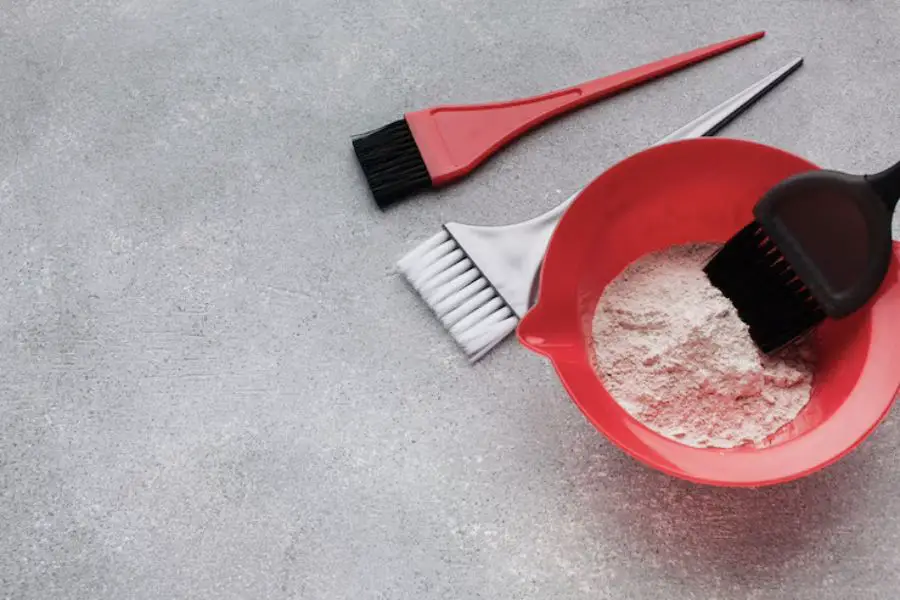
Hair bleach is a chemical substance used to lighten your hair color.
It breaks down the natural pigments within your hair, allowing you to achieve a lighter shade.
Hair bleach is often used in combination with a developer. The developer helps to activate the bleach and allows it to penetrate your hair strands.
How Does the Bleaching Process Work?
To bleach your hair, you apply a mix of bleach and developer.
The bleach opens your hair’s cuticle. This helps the developer break down its natural color pigments. This reaction lightens your hair.
As you bleach, your hair goes through stages of lightening.
Observe the progress and remove the bleach at the right time for your desired shade. This will protect your hair from excess damage.
If you have darker hair, you may need several bleaching sessions to get the color you want.
How to Prep for the Bleaching Process
We’ll walk you through the necessary steps to prep your hair for the bleaching process.
- Do your homework before committing to the bleaching process
- Prepare yourself for high-maintenance hair care
- Conduct a strand test first
Do Your Research
Read up on bleach before committing to dye your whole head.
Familiarize yourself with the different types of bleach, developers, and hair color options.
Study the potential risks and side effects of bleaching your hair to prepare you for the process.
Mentally Prepare for the Maintenance
To keep your bleached hair looking fresh and vibrant, regular maintenance is essential.
You’ll need to invest time and money in hair care. This includes touch-ups, toning, and deep conditioning treatments.
Maintaining bleached hair may also need changes to your hair care routine.
These include using color-safe shampoos and conditioners. Plus, reducing heat styling to prevent more damage.
Strand Test
A strand test is a crucial step before bleaching your entire head of hair.
It will help you determine how your hair will react to the chemicals. It will also allow you to adjust the processing time as needed.
To perform a strand test, select a small section of hair from an inconspicuous area, like the nape of your neck.
Apply the bleach and developer mixture following the product instructions. Observe the color change.
You can gauge how long to leave the bleach on your hair to get the color you want without causing too much damage.
How Often Can You Bleach Hair Safely?
You asked, and we answered. Learn how often you can bleach your hair without causing irreversible damage.
Can I Bleach Over Already Bleached Hair?
Yes, you can bleach over already bleached hair. But, you must wait at least 2 weeks to avoid excessive hair damage and scalp irritation.
Always perform a strand test before applying bleach. Test if your hair is still strong enough to handle the process.
How Often Can You Bleach Your Roots?
You can bleach your roots every 4-6 weeks. This allows your scalp to recover, and your hair to grow half an inch for the bleach to grip onto.
Give your roots time to grow to lower the risk of overlapping bleach on already bleached areas.
How Often Can You Bleach Your Whole Hair?
You should only bleach your hair every 3-4 months, considering hair health and texture. Frequent full-head bleaching can cause significant hair damage, especially without proper care.
Regular deep conditioning treatments are crucial to maintain hair strength.
How Many Times Can You Bleach Your Hair in a Month?
It’s not recommended to bleach your hair more than once a month. This will help you avoid hair damage and potential scalp issues.
How Many Times Can You Bleach Your Hair Before It Falls Out?
The number of times you can bleach your hair before it falls out depends on several factors. These include your hair’s health, texture, and the products used.
But, frequent bleaching can weaken hair and cause it to break or fall out.
To be safe, limit bleaching sessions to once every 4-6 weeks for roots and 3-4 months for the whole hair. Always inspect your hair’s condition before you proceed.
Is Using A 20 Developer Safe for Multiple Bleaching Sessions?
A 20-volume developer is a safe option for multiple bleaching sessions.
It is less aggressive than higher volume developers and reduces the risk of hair damage.
What is Double Bleaching?

Double bleaching is where you bleach your hair twice in a short time to achieve a lighter color faster.
It works fast, but it involves exposing your hair to strong chemicals many times. This increases the risk of damaging your already bleached hair.
Follow these steps to do a double bleach:
- Mix bleach powder and developer as instructed.
- Apply an even mixture to your hair, avoiding your scalp.
- Leave it on for 30-45 minutes.
- Rinse out the bleach and check the results.
- If necessary, repeat the process with a fresh batch.
- Use deep conditioning treatments and protein masks post-bleach.
Before trying double bleaching, consult with a professional hairstylist. It is especially important if you’re inexperienced or have dark hair.
They can guide you and suggest safer options for your hair’s health.
Prepping Your Hair For The Second Bleaching Session
Keep in mind that bleaching too often can lead to breakage, dryness, and other hair issues.
Follow these steps to ensure your hair is ready for the second bleaching session.
- Rest your hair for at least two weeks between bleaching sessions.
- Use a deep conditioning treatment weekly to repair the damage.
- Avoid heat-styling tools to keep your hair strong.
- Choose the right developer for your hair color.
- Perform a strand test before double bleaching.
Be patient with the process to achieve the best results and keep your hair healthy.
What Are the Dangers of Over-Bleaching Hair?
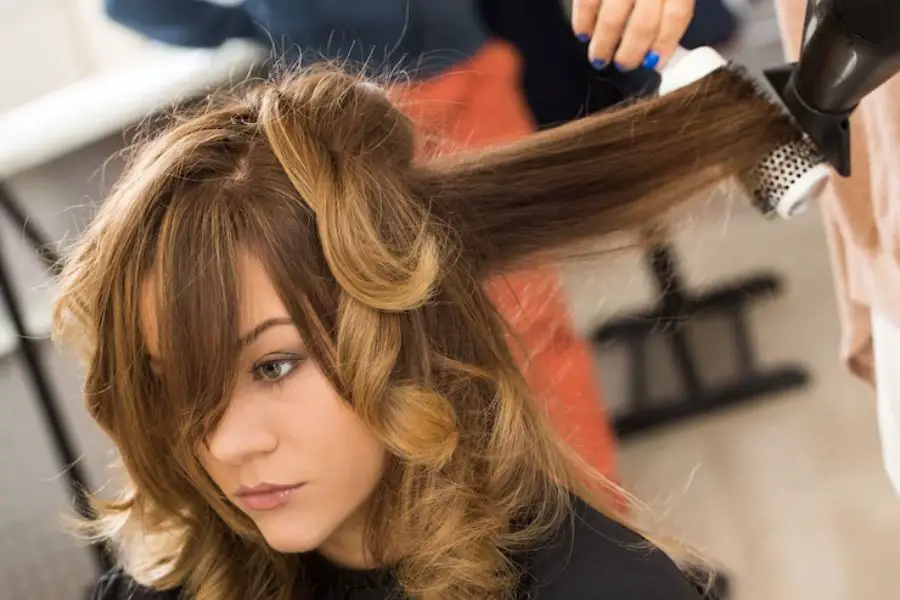
Wondering what the risks of overdoing hair bleaching are? Here are the signs and symptoms of bleach-damaged hair.
- When your hair feels dry to the touch
- Spots or streaks of brassy tones
- Painful scalp burns or hair loss
- Weak, unhealthy hair
Dry, Frizzy, and Coarse Hair
When you bleach your hair too often, it can become dry, frizzy, and coarse. This happens when bleach and peroxide strip away natural oils and moisture in your hair.
You can help your hair recover with deep conditioning and hot oil treatments.
Brassy Tones
Over-bleaching your hair can cause unwanted brassy tones, especially on darker hair.
These warm, orange, or yellow tones can be hard to manage. But, purple shampoo can help to neutralize these tones.
Scalp Burns
Frequent bleaching can result in scalp burns due to the strong chemicals in bleach.
These burns can be painful, and in some cases, lead to hair loss.
Ask a professional for advice on healing and hair recovery if you experience scalp burns.
Compromised Hair Health
Healthy hair is prone to damage if you bleach it too often. Damage to the hair shaft, leading to breakage, split ends, and brittle strands is common.
Give your hair time to recover between bleaching treatments to keep it healthy. It’s also vital to consider your hair type before deciding how often to bleach it.
Some hair types are more prone to damage and breakage. Consult with a professional for the best approach for your hair’s health and needs.
How Do You Bleach Hair at Home Safely?
Ready to bleach your hair at home? We’ll walk you through the process step-by-step, ensuring safety and stunning results.
DIY Bleaching Tips
When bleaching your hair at home, follow these safety guidelines:
- Use a hair bleach kit designed for home use and read the instructions.
- Conduct a strand test to check your hair’s reaction to the bleach mixture.
- Divide your hair into sections if the strand test is positive.
- Apply an even bleach mixture to each section, keeping it away from your scalp.
- Wear gloves and work in a well-ventilated area to avoid fumes.
Choose the Right Volume Developer
Choosing the right developer is crucial. It determines the bleach mixture’s strength and effectiveness.
Developers range from 10 to 40 volume, with the higher numbers being stronger and more potent.
Here’s a quick guide to choosing the right developer strength:
| Developer Volume | Purpose |
| 10 Volume | Best for minimal lifting and thin or fragile hair |
| 20 Volume | Lifts color by up to 2 shades; ideal for DIY home applications |
| 30 Volume | Lifts color by up to 3 shades; best for darker hair |
| 40 Volume | Advanced level developer; ideal for professional colorists |
Always read the instructions that come with your bleach kit. Use the correct proportions of bleach powder and developer.
Monitoring the development process is crucial. Check your hair every few minutes to ensure the desired level of lightening.
Once the process is complete, rinse your hair well. Apply a deep conditioning treatment to nourish your hair and prevent further damage.
How Do You Protect Bleached Hair?
Protecting your bleached hair is easier than you think! Explore our guide for expert advice on maintaining its health and shine.
- Apply a protein hair treatment to repair damage
- Limit your use of curlers, flat irons, and other heat styling tools
- Buy a demi-permanent toner for extra shine
- Hydrate your hair with a moisturizing hair mask
- Go organic with leave-in conditioners and oils
- Schedule a salon day for professional care
Use A Bond-Strengthening Protein Hair Treatment
Apply a protein hair treatment once every four to six weeks. These treatments contain proteins that bond to your hair and repair damage.
Lay Off The Heat Styling Tools
Heat styling tools include flat irons, curling wands, and blow dryers. These can cause damage to your hair, especially when it’s bleached.
Limit their use to once a week or less. When you do use them, use a heat protectant spray to safeguard your hair from further damage.
Invest In A Demi-Permanent Toner
A demi-permanent toner can help neutralize unwanted yellow or brassy tones. It adds shine and lasts for several weeks.
Apply the toner as the label suggests and follow the recommended processing time.
Use A Moisturizing Hair Mask
A moisturizing hair mask can help restore hydration to your bleached hair. Look for masks with deep conditioning ingredients like coconut oil.
Use a hair mask once a week, leaving it on your hair for 10-15 minutes before rinsing. This will help keep your hair soft, shiny, and healthy.
| Ingredient | Benefit |
|---|---|
| Coconut oil | Nourishes and hydrates hair |
| Aloe vera | Soothes and moisturizes the scalp |
| Honey | Provides shine and softness |
Leave-In Conditioners and Oils
Leave-in conditioners and oils can also help protect your bleached hair. They add extra moisture and reduce frizz.
Apply a small amount of leave-in conditioner or oil to lock in moisture. You can use argan oil or coconut oil for the ends of your hair after washing to lock in moisture.
Leave It to the Pros
When it comes to bleaching your hair, it’s best to leave it to professional hairstylists. They know which products and techniques can protect your hair from bleach.
Visiting a salon for your hair color needs will give you peace of mind knowing your hair is in good hands.
Transition to a Natural Hair Color After Bleaching
If your hair is over-processed and feels mushy, it may be time to transition back to your natural hair color.
Grow out your roots and blend in your natural color with the bleached sections.
Warm and brassy undertones are manageable with cool-toned shampoos or toners.
Platinum blonde may be challenging to achieve without compromising your hair’s protein bonds. Discuss alternatives with a professional for the best results.
5 Common Bleaching Mistakes
Bleaching your hair can be tricky, and it’s easy to make mistakes. Paying attention to these common errors will help you avoid damaging your hair.
- Bleaching too often
- Not using the right products for your hair
- Applying uneven amounts of bleach
- Only skimming the instructions or winging it
- Over-processing your hair
1. Over-Bleaching
When you bleach your hair too often, it can become weak and brittle. Remember to wait at least four weeks between treatments. If your hair is already damaged, it’s best to wait even longer.
2. Using the Wrong Products
Not all bleaching products are the same. Make sure to use high-quality bleach and developer.
Choose ones that are appropriate for your hair type and desired color. Avoid products with harsh chemicals that can cause more damage.
3. Uneven Application of Bleach
To achieve an even color, it’s crucial to apply even amounts of bleach to your hair. Use a brush and section your hair to ensure full coverage.
Don’t forget the roots and tips of your hair.
4. Not Following Instructions
Bleaching products come with specific instructions. This is to help you avoid mistakes. Always follow the instructions for the best results.
5. Leaving Bleach In Too Long
Keep an eye on the time when bleaching your hair. Over-processing can lead to hair damage and undesired color results.
Set a timer and check your hair throughout the entire process.
Frequently Asked Questions
Can You Dye Your Hair After Bleaching?
Yes, you can dye your hair after bleaching it. But, you must wait for at least 48 hours before applying any dye. This waiting period allows your hair to recover from the bleaching process. Plus, it reduces the risk of damage.
How Many Times Do I Need to Bleach for Platinum Blonde?
To achieve a platinum blonde shade, you may need to bleach your hair several times. The number of bleaching sessions depends on your starting hair color. For instance, if you have dark hair, it can take up to three or even four sessions.
How Often Should I Bleach for A Gradual Blonde Transition?
Bleach your hair once every 4-6 weeks to get a gradual blonde shade. This gives you enough time to observe the color change and gauge how light you want your hair to be. Always use the right products and follow the recommended steps to avoid hair damage.
How Long Does It Take to Dye Your Hair?
When using hair dye, the time it takes to develop depends on the brand and type of dye. Professionals recommend leaving the dye on your hair for 20-45 minutes. It’s best to follow the manufacturer’s instructions to lower the risk of any damage.
Should I Bleach My Hair Again If It Turns Orange?
If your hair turns orange after bleaching, you can either opt to re-bleach or use a toner to fix it. If you decide to re-bleach, wait at least two weeks to give your hair a break. Or, use a toner to neutralize the orange tones and achieve a more even color.
Can I Dye Unevenly Bleached Hair?
Yes, but it’s recommended to fix the uneven bleaching before dyeing. You can do this by applying hair dye to the darker parts of your hair first so those areas can catch up in color. Using a toner can also help even out uneven spots.

